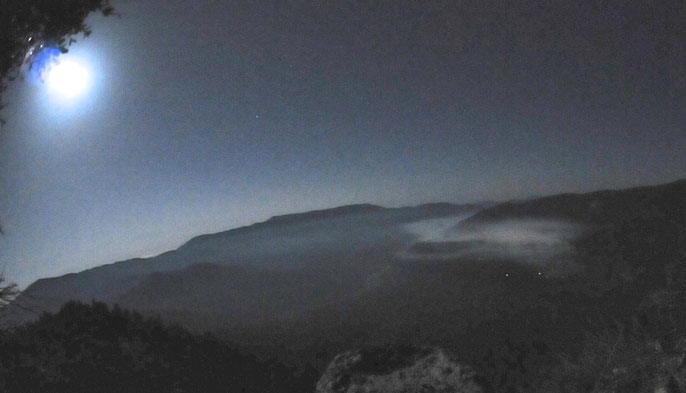Smoke will be present particularly during late evening and early morning hours. The fire crews will continue working through the weekend to mop-up and cool the fire line. Those efforts will help mitigate and lessen smoke production each day. If you have low tolerances for smoke, take these suggested measures to help reduce your exposure:
- Stay indoors when the greatest amount of smoke is present (6 to 8 am).
- Close windows, doors and outside vents when it is smoky.
- Ventilate your home, cabin or work place during periods when it is least smoky.

Fire managers have been working with the Mariposa County Air Pollution District (MCAPCD) to time the project to coincide with favorable weather that will facilitate good air quality, and disperse smoke into the atmosphere away from the community. Prior to ignition, a burn permit was issued to the park by MCAPCD and smoke monitoring equipment was installed in the community.
Yosemite National Park fire managers began burning the 150 acre Wawona Northwest Segment B Prescribed Fire on April 21, 2013. Ignitions were completed on Tuesday, April 22.
The primary objective of this prescribed fire was met to reduce hazardous fuels within the mixed conifer forest adjacent to the Wildland Urban Interface (WUI) community of Wawona. This project creates a continuous area of reduced fuel by linking together multiple previous fires and treatments including the 2007 and 2008 Wawona Northwest prescribed fires, the 2007 Jack wildfire, which was caused by lightning, and a series of mechanical vegetation thinning projects in the 2000's.
A secondary objective is ecosystem restoration. Applying fire under prescribed conditions mimics the frequent, low intensity lightning caused fires that occurred in Sierras prior to the exclusion of fire which began over 100 years ago under aggressive fire suppression policies. Historically, natural fire burned an average of 16,000 acres annually in Yosemite and played an integral role in shaping Yosemite's ecosystems. In the absence of frequent fire, unnatural levels of forest biomass have accumulated which has put many of Yosemite's values at risk, including neighboring communities, and natural and cultural features. As climate changes, these values become increasingly vulnerable to catastrophic wildfire.
Fire managers will begin releasing fire crews from outside of the park over the weekend.
